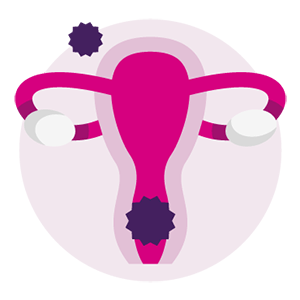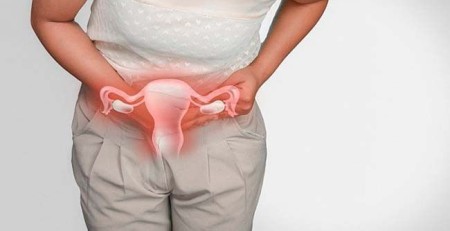Endometriosis. Symptoms, risk factors, diagnosis and treatment.
Endometriosis is a benign disease that affects about 10% of women of reproductive age. It is characterized by the presence of glands, which are usually found inside the uterus, in anonasal locations, namely in the pelvic cavity, intestine, bladder, pleura, etc.
What are the risk factors associated with this disease?
There are some risk factors associated with a higher incidence of endometriosis such as: early onset of menstruation, late menopause, short menstrual cycles, uterine malformations, low body mass index, nulliparity, among others. On the other hand, there also seem to be some factors that provide protection against the disease, such as multiparity, breastfeeding and the black race. It is believed that taking a combined contraceptive pill may also play a protective role.
How does endometriosis arise?
Endometriosis arises when gland implants, which are located in abnormal sites, grow and trigger an inflammatory response.
The most widely accepted theory is Sampson’s theory or retrograde menstruation that advocates the existence of a retrograde flow of endometrial cells (from the cavity of the uterus) through the fallopian tubes during menstruation toward the pelvic cavity. However, it is known that up to 90% of women have retrograde menstruation phenomena and that not all will develop endometriosis, so additional factors will be needed to develop the disease.
What are the symptoms of endometriosis?
The clinical presentation of endometriosis is very variable and may not be related to the extent of the disease: there are women with extensive disease with little or no symptoms and women with mild disease and disabling pelvic pain. The classic symptoms are dysmenorrhea (menstrual pain, which typically arises 1-2 days before menstruation and which can extend beyond the menstrual phase), chronic pelvic pain and dyspareunia, typically deep (pain with intercourse). There are then many other symptoms of the disease and that correlate with the fact that the ectopic foci of endometrium can be located in almost any organ: hematoquézias (blood loss in the stool), hematuria (blood loss in the urine), abdominal pain, hemoptysis (blood loss with cough)… In cases of mild endometriosis infertility may be the only manifestation of the disease.
How is endometriosis diagnosed?
The definitive diagnosis of the disease is surgical, through direct visualization of the lesions, biopsy of the lesions and histological diagnosis. Symptoms of pain associated with menstruation and/or sexual intercourse, as well as typical findings on clinical examination should raise suspicion of the presence of this disease. Gynecological ultrasonography via transvaginal is the examination of choice for imaging study, allowing the identification of foci of endometriosis in the ovaries (endometriomas) as well as in other locations and giving an accurate idea of the extent of the disease. Magnetic resonance imaging may also play an important role especially before the surgical approach or in situations where pelvic ultrasonography is inconclusive.
How is endometriosis treated?
Endometriosis should be seen as a chronic disease and as such treatment should be prolonged in order to reduce the need for surgical interventions. The goal will be to decrease or eliminate menstruation and decrease the activity and formation/growth of new lesions. Initial medical therapy is based on taking nonsteroidal anti-inflammatory drugs and combined hormonal contraception (cyclic or continuing). Most patients have frank improvement with first-line therapy. There are other therapeutic alternatives for patients whose disease progresses, but conditioned by the presence of side effects sometimes poorly tolerated by patients. Surgical therapy is thus reserved for women with severe and disabling symptoms who do not respond to medical therapy, when hormonal therapy is contraindicated, or when malignancy is suspected. The purpose of surgery is to reset the normal anatomy to the maximum and excise/destroy the visible disease. Depending on the location and depth of the disease, more radical surgeries may be required with recession of part of organs (bladder, intestines…).
Endometriosis and menopause.
We know that menopause causes hormonal changes in women. The decrease in circulating levels of estrogens in the postmenopausal period causes approximately 96% of women with endometriosis to become asymptomatic in this phase of reproductive life. Despite being a hormone-dependent disease, endometriosis is not a contraindication to carrying out hormonal therapy in menopause, given that the risk of recurrence is negligible.







